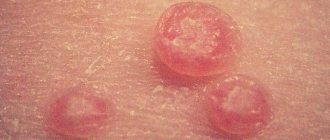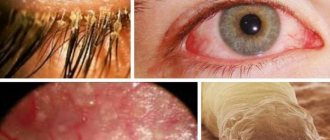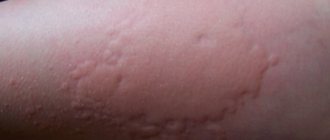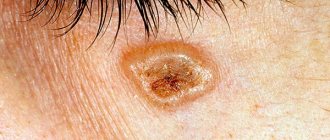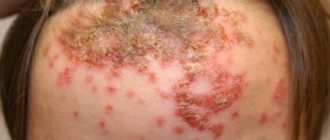A syndrome such as inflammation of the nasal mucosa is also called rhinitis, popularly called runny nose. Its characteristic manifestation is the release of mucus of various origins from the nose, and inflammation is often accompanied by nasal congestion and impaired sense of smell.
Inflammation of the nasal mucosa can develop due to various reasons, which determine the subsequent method of treatment. Today you will learn why inflammation of the nasal mucosa occurs and what the treatment for this syndrome is.
Inflammation of the nose: causes
Viruses, bacteria, and fungi can become carriers of infection. They cause an inflammatory process in the mucous membranes and the appearance of a runny nose. Other reasons that a person has an inflamed nose may include the following factors:
- entry of a foreign body (usually in children);
- injuries – inflammation without runny nose;
- hormonal changes that occur during pregnancy;
- allergic reactions;
- rough medical manipulations;
- long-term use of antibiotics against the background of reduced immunity.
What is ozena
Furuncle (boil) of the nose is an acute disease, which is a purulent inflammation of the hair follicle and nearby tissues. In the center of the boil there is a purulent core. The boil can be located on the wings of the nose, on the outer and inner parts of the nasal cavity, on the tip and on the skin of the nasal septum.
Statistics show that this disease affects people of all age groups, most often from 15 to 45 years (men are diagnosed 2 times more often than women).
As a rule, a boil cannot be detected at the initial stage of its development, since it is not visually visible. More obvious symptoms occur when the boil begins to develop.
At the first suspicion of a boil, it is very important to seek help from a specialist. The doctor will help diagnose the source of infection, prescribe treatment and prevent the formation of new boils.
According to the ICD-10 code, this disease is designated as J 34.0. By definition, a boil inside the nose characterizes a purulent-inflammatory lesion of the skin surface with a focus of pathology in the hair follicle. The pathological process begins with inflammation of the hair follicle or sebaceous gland of the nose, but as purulent masses accumulate, it can lead to the development of sepsis and thrombosis; Doctors do not rule out death for the patient. Therefore, an abscess in the nose should not be left without timely medical attention.
If sores constantly form in the nose and the smell is bad, then the doctor may suspect the presence of a rather rare disease - ozena. It is also called fetid runny nose.
Until now, the causes of this disease have not been fully studied, but most often it is observed during infection with the mucous bacterium Klebsiella ozaenae, with pathologies of the pterygopalatine or sympathetic ganglion, as well as with endocrine disorders.
This disease is chronic and treatment is aimed at relieving symptoms. To do this, rinse the nose with saline solution, lubricate the wounds with streptomycin ointment, and make intramuscular injections of the drugs Gentamicin, Lincomycin, Oxacillin, etc.
What is blastoma and its specifics
Remember! The peculiarity of tumors is their ability to increase in size (grow) even when the influence of the factors that triggered the onset of their growth has already ended.
Also, the properties of these tumor cells (blastosis) can be transferred to newly formed cells. But still, the most interesting question for those who have been diagnosed with a tumor is – is it cancer or not?
All blastomas can be divided into the following types:
- benign blastomas (Blastoma benignum) - they grow slowly, do not grow into neighboring tissues, but can only squeeze them or push them aside;
- malignant blastomas (Blastoma malignum) - melanomas - they grow into surrounding tissues (that is, their growth is infiltrative, or invasive), destroy these tissues, damage blood vessels, spread throughout the body, causing metastases.
If the tumor is benign, then it is not classified as cancer, but benign forms of blastoma are quite rare (about 1% of the total number of tumors). But even in this case, a benign formation can be dangerous if it is located in a dangerous place. For example, a cancerous brain tumor (glioblastoma - blastomatosis), even without the presence of metastases, can be extremely dangerous, since as it grows it compresses the tissues of the parts of the brain responsible for the vital functions of the body.
When should you see a doctor? Diagnostics
A certain proportion of patients are not inclined to perceive the signs of a runny nose and congestion as a serious illness. As a result, the symptoms are simply ignored, and the disease develops into severe chronic forms.
Diseases at an advanced stage are much more difficult to treat and can even cause complications such as meningitis, orbital phlegmon, brain abscess, and eyelid edema.
If you have an elevated body temperature that persists for 2-4 days, heavy discharge, a feeling of heaviness and discomfort in the nasal sinuses, you should definitely contact an otolaryngologist. The following methods are used to diagnose the disease:
- general examination and palpation;
- radiography;
- CT scan;
- endoscopy.
If there is reason to suspect an allergic origin of the inflammatory process, an allergen test is indicated. Once the disease is identified, treatment is prescribed.
Symptoms of blastoma
Remember! In the early stages of cancer, there may be no symptoms that would force a person to seek medical help from specialists: pain, fever, and others.
Therefore, there are frequent cases when patients who do not undergo preventive examinations by doctors begin treatment for blastomas in the last stages of the disease, and here doctors can no longer give favorable prognoses.
But there are so-called small signs that, when combined, can make a person wary and go to the doctors for tests and examination. This may include:
- Sudden large loss of body weight;
- Decreased ability to work;
- General weakness (while maintaining the usual lifestyle);
- Loss of appetite, food aversion (sometimes even to the point of nausea and vomiting);
- Fast fatiguability;
- Ophthalmological disorders (double vision);
- Unnatural discharge (blood or mucus).
Children may experience neurological disorders. This can be expressed in increased nervousness, impaired attention and sleep. It is also worth paying close attention to such a moment as unsuccessful treatment. Persistent dysfunction of any organ cannot be treated with classical methods. This point should lead you to think that the problem is not only a simple failure of the organ.
Don't waste your time searching for inaccurate cancer treatment prices
*Only upon receipt of information about the patient’s disease, a representative of the clinic will be able to calculate the exact price for treatment.
Nasal basalioma: photo, features, appearance, similar skin diseases
Basalioma of the skin of the nose is the most common; this page presents its characteristic features; main types, their photos; treatment methods; externally similar skin diseases, their photos.
Features of nasal basal cell carcinoma
The nose is the most prominent part of the face; visible damage (including basal cell carcinoma) on the skin of the nose is often noticed by patients themselves at the very beginning of the disease. Due to its protruding position, it is most exposed to sunlight. For this reason, skin basalioma most often affects the nose.
The skin in the area of the cartilaginous part of the nose (tip and wings) is very thin and contains virtually no fatty tissue underneath. As a result, nasal basal cell cartilage penetrates relatively quickly into the cartilage; getting it out of the cartilage is only possible with great difficulty and is associated with disfiguring surgical interventions (see photo below).
Basalioma of the nose on its lateral surface at the border with the inner edge of the eye is also very dangerous - here there is a risk of penetration into the periorbital tissue.
If you have already had basal cell carcinoma before, the nose requires the greatest protection and attention, because after treatment, 30-40% will develop the disease again, but in a different place.
Tanning is contraindicated, and in the summer, in addition to a hat, a good sunscreen is needed.
Basalioma of the nose. Main types, their photos
Regarding the main types of nasal basal cell carcinoma, one should first of all expect nodular and ulcerative forms, since the anatomical features of the skin predispose them to them. The growth rate is relatively faster than other areas. The photo shows nasal basal cell carcinoma of the main varieties.
Nasal basalioma of the nodular type with the earliest manifestations. A small pearly plaque (marked with a large arrow) on the wing of the nose and an even smaller one (marked with a small arrow) in the nasolabial fold. These are very early stages of basal cell carcinoma. The gray arrow marks the intradermal nevus.
Further stage of development of nodular basal cell carcinoma. A single shiny nodule of nasal wing basal cell carcinoma with a large number of dilated vessels.
The photo shows a nodular basal cell carcinoma of the nose. A large, hard reddish shiny nodule with small ulcerations on the skin of the wing of the nose.
In the photo, pigmented basalioma of the nose on the left is of the pigmented variety; an ulcer appears in the central part.
Ulcerative basalioma of the nose under a scab. Periodically, part of the scab may come off, and the tumor then begins to bleed. In some people, the skin is completely covered with keratomas, which is why a basal cell carcinoma of this type may be perceived for some time as just another keratoma.
The photo shows a nasal basalioma of the ulcerative variety. A large round ulcer on the tip of the nose with ridge-like borders.
Large nasal basal cell carcinoma extending to the inner corner of the eye. Treatment of such a disease is not an easy task; usually a flap of skin is taken from another area and transplanted instead of the removed tissue; cryodestruction is also possible.
The photo shows a basal cell carcinoma of the nose in the dorsal and lateral areas. Closer to the center of the nose, basalioma appears as a recessed area, resembles a scar, and belongs to the sclerosing variety. Along the edge of the tumor on the right, basal cell carcinoma transforms into a nodule with ridge-like edges, taking on the appearance of a nodular variety.
Fibrosing basal cell carcinoma of the nose looks like scar plaques in the photo. To the touch it turned out that the tumor was spreading beyond the visible boundaries.
The photo shows the remaining healthy tissue after removal of nasal basal cell carcinoma. The disease was treated surgically with step-by-step examination under a microscope (Mohs method). The study showed that the tumor penetrates very deeply, even growing into the cartilage.
As for the treatment of nasal basal cell carcinoma, the differences relate mainly to the execution of the surgical method; other treatment methods do not undergo any changes, you will read about them in other sections of the site. In general, they ensure that the scar after removal of nasal basal cell carcinoma runs along natural folds and irregularities, becoming less noticeable.
Repositionable nasal flap. Wound after removal of basal cell carcinoma of the lateral surface of the nose with outlines of the flap moving along the wing.
Nasal basal cell carcinoma removed. To move the flap, the skin is peeled away from the underlying fatty tissue and cartilage. Final closure of the postoperative wound after treatment.
Rotational spiral flap. A small round wound remains after removal of nasal basal cell carcinoma.
In the photo, the basal cell carcinoma of the nasal wing has been removed and additional incisions have been made. The edges of the wound are connected in a Z shape.
This is what the scar looks like 3 months after surgical treatment of nasal basal cell carcinoma. The scar runs along the fold of the wing.
The following are photos of externally similar skin diseases characteristic of the nose area.
Boils
Furunculosis is provoked by staphylococcal infections and pyogenic bacterial flora. The disease manifests itself in the form of purulent inflammation with necrotic damage to the connective tissue, sebaceous gland and hair follicle. On the face, the area of the wings of the nose is considered more susceptible to the occurrence of boils.
To treat furunculosis, antiseptics, drugs that eliminate inflammation, and physiotherapy are prescribed. After the boil opens, it is treated with antibacterial agents. The doctor should also prescribe antibiotics to treat the staph infection.
How to relieve inflammation in a child's nose?
In order to successfully cure a disease associated with inflammation of the nasal cavity, a complex of therapeutic measures is used.
This includes drug therapy, physiotherapeutic procedures, and surgery (sinus puncture). The main goal of treatment is to relieve congestion, ensure free breathing and prevent the development of complications.
Medications include:
- vasoconstrictors to eliminate swelling and establish free breathing (Otrivin, Nazivin drops);
- antiseptics - accelerate healing, prevent the spread of pathogens (Protargol drops, Collargol, Bepanten ointment);
- antipyretics to stabilize body temperature (Panadol, Ibuprofen);
- antihistamines for allergic pathology (Fenistil, Zyrtec).
Prescribing antibiotics is only justified in cases where the problem is caused by a bacterial infection. They can only be used as prescribed by a doctor.
If the inflammatory process is of viral origin, antiviral drugs are prescribed - Viferon, Grippeferon.
The mechanism of development of the disease
The linings of the sinuses are responsible for several functions. Inhaled air passes through these structures, which is moistened, warmed, and purified. At the same time, tissues can be attacked by a whole host of pathogens. Inflammation in the nose can occur due to contact with pathogenic microorganisms, cold air, dust, various allergens, and synthetic irritants. Despite the cause of the problem, the mechanism of development of the disease always has common features.
The tissues of the mucous membranes of the nasal sinuses are dotted with a network of blood vessels. The functions of the latter are inhibited under the influence of pathological factors. There is a deterioration in blood circulation. A large amount of lymph stagnates in the surrounding structures. The result is inflammation of the mucous membrane in the nose, making breathing difficult. A significant volume of fluid is formed, which gradually leaves the respiratory tract.
Diagnosis of the disease
Diagnosis of cancer these days is carried out using radiation diagnostics (x-ray examinations):
- Classic X-ray;
- MRI (magnetic resonance imaging);
- CT (computed tomography);
- Ultrasound.
In the future, morphological studies are required - a biopsy of damaged tissue or organ to determine the presence of cancer cells. Laboratory analysis is also prescribed - studies for tumor markers (there are about 20 types).
Washing
How to relieve pain and swelling during inflammatory processes in the baby’s nose, besides medications? The procedure of rinsing the child’s nasal cavity has a good therapeutic effect.
The best pharmaceutical drugs used for this purpose include Aqualor and Aqua Maris. These preparations are made on the basis of sea water. They do not irritate the mucous membrane and contain a large amount of useful substances.
A decoction based on medicinal herbs would be a useful way to rinse a child’s nose. Chamomile flowers, mint leaves, sage, and lemon balm are suitable for this purpose.
You can prepare a saline solution at home. To do this, dissolve a third of a teaspoon in a glass of warm boiled water.
Remember
Washing is contraindicated in case of otitis media, trauma, deviated nasal septum, polyps, or the presence of foreign bodies in the cavity.
Among physiotherapeutic procedures, inhalations have proven themselves well. infrared irradiation, electrophoresis, quartzization of the nasal cavity. Therapeutic breathing exercises are recommended.
Read more about the methods: How to properly rinse a child’s nose: a complete guide
Rinse the nose with saline solution. How to rinse your nose with salt?
Treatment of blastoma
Treatment options for blastoma depend on the type of blastoma, its location, the stage of the disease, the patient's general physical condition, and other factors. Traditional methods of treating blastomas include:
- Chemotherapy;
- Radiation therapy;
- Surgical removal.
Of course, surgical removal of the tumor is most often recommended to avoid the subsequent appearance of metastases. But this type of treatment is not effective if metastases already exist. Surgery is also avoided when the blastoma is located in a dangerous place (if there is a risk of damage to vital tissues).
Other methods are used as independent treatment or in combination treatment. Types of therapy such as drugs or immunotherapy are also used. Medicines are effective for some types of blastomas, and immunotherapy is aimed at activating the body's defenses.
Remember! In the final stages of cancer, it is usually possible to only slightly prolong the patient’s life, and not to completely cure the disease. Therefore, the best prevention can be disease prevention and regular examinations with a doctor.
Acne prevention
To avoid the appearance of unpleasant spots on the face, it is necessary to prevent the appearance of formations.
- To do this, give up bad habits.
- Instead of fatty foods, eat right.
- Engage in active sports and recreation.
- Every day, wash your face with soap at least twice.
- Keep your hands clean since they touch your face most often.
The main condition for the spread of acne is dirt. On oily or dirty skin, inflamed subcutaneous formations often appear.
Therefore, you need to be more careful about the condition of your skin. Use cleansing face masks, tonics, scrubs, creams. Then the face will be smooth, uniform and beautiful. And acne will never bother you.
Causes of blastomas
The exact reasons for the occurrence of blastomas are not yet known to scientists, but there are some factors that can be classified as such:
- Genetic disorders;
- Hereditary predisposition;
- Problems with hormonal levels (this is especially true for female forms of cancer, for example, breast blastoma);
- Bad habits (smoking, drinking alcohol, drugs);
- Poor nutrition (fatty foods, lots of nitrates, preservatives, lack of vitamins);
- Weak immunity (which can be suppressed by a large number of medications taken).
Genetic changes can be provoked by carcinogens that affect genes (plastomes). Carcinogens that provoke the formation of blastomas are divided into three types:
- Chemical;
- Physical;
- Viral.
According to statistics, about 75% of cancer tumors occur under the influence of chemical carcinogens, among them:
- Tobacco combustion products;
- Chemical compounds resulting from industrial production;
- Chemical compounds in food.
In total, about one and a half thousand chemical carcinogens are known, and the effects of about 20 of them influence the appearance and development of blastomas.
Organic carcinogens include: amides, epoxides, aromatic carbons and other emissions into the atmosphere. Inorganic - asbestos, arsenic - entering the body from the outside or amino acids, estrogen metabolites - produced by the body due to metabolic disorders.
There are also physical carcinogens, these include: radiation, x-rays, ultraviolet in excess doses.
Also, a high risk of blastomas is created by so-called oncogenic viruses, which include:
- Hepatitis B, C (it can provoke the development of liver cancer);
- A certain type of papilloma virus (increases the risk for women of developing cervical cancer, and for men of genital cancer);
- Herpes virus type eight and Epstein-Barr virus (can cause sarcoma and lymphoma);
- HIV (creates a favorable environment for the development of blastomas of any type).
Remember! If among your relatives there were those suffering from cancer, then you are recommended to undergo systematic examinations by specialists.
Inflammation of the nose from the inside: treatment at home
Treatment of pathological processes in the nasal cavity is prescribed in accordance with the disease that caused it. For infection, vasoconstrictor drops, rinsing spray, and ointments are used to eliminate the disease.
Nebulizer inhalations are also effective for the treatment of rhinitis, sinusitis, and sinusitis. It is possible to use traditional medicine, but prior consultation with a doctor is required before use.
Rhinitis of allergic origin requires the use of antihistamines.
Classification of blastomas
Cancerous tumors with metastases can affect vital organs, due to bleeding in tissue damaged by the tumor, leading to anemia, poisoning of the body with decay products of cancer cells, and metabolic disorders. The result of all these processes is exhaustion of the body - cachexia, in which conservative treatment is no longer effective.
There are specific malignant tumors that develop from embryonic tissues, they are also designated by the word blastoma. Classification of blastomas occurs depending on the affected organ:
- Pleuropulmonary blastoma (lungs);
- Nephroblastoma (blastomatous process in the kidneys);
- Hepatoblastoma (liver);
- Glioblastoma (brain);
- Medulloblastoma (cerebellum);
- Retinoblastoma (eyes);
- Neuroblastoma (nervous system) is a soft tissue tumor of nerve endings.
Ointment for inflammation in the nose
With the help of various nasal ointments, you can quickly get rid of boils, eczema, erysipelas, and herpes. For treatment use:
- antibacterial ointments to relieve pain and swelling, restore breathing (Levomekol, Baktoroban, Miramistin, Vishnevsky ointment);
- anti-inflammatory drugs eliminate pain, inhibit the spread of viruses, strengthen the immune system (Viferon, Infagel, oxolinic ointment);
- combined agents have an antiseptic and antiallergenic effect, suppress the activity of pathogenic microorganisms (Bepanten, Pinosol, Sinoflan, Fleming ointment).
In addition to pharmaceutical products, ointment is used, which is easy to prepare at home. Vaseline is mixed with aloe leaf juice and a few drops of menthol and eucalyptus oil are added. Lightly lubricate the turundas with the resulting mixture and place them in the nasal passages for 10-15 minutes.
Types of blastomas
Breast blastoma
Women of different ages are susceptible to this disease (but there are times when this disease also occurs in males). What factors increase the risk of developing breast blastoma? These include:
- The presence of such a disease in relatives;
- Problems with reproduction due to hormonal imbalance;
- Lack of childbirth (and lack of breastfeeding after it);
- Atherosclerosis;
- Diabetes;
- Hypertension.
In most cases, breast blastoma can grow into the lungs (forming a lung blastoma), liver, bone, or spinal cord. Intoxication of the body and rapid death occurs.
The first signs of breast blastoma may include the following symptoms:
- Consolidation in the chest area (breasts begin to change their shape);
- The skin on the chest becomes retracted and wrinkled;
- Pain and discomfort are felt in the chest;
- The nipple becomes hard and swollen, and discharge may appear from it;
- Lymph nodes enlarge.
Mammography, ultrasound, and biopsy are used to diagnose breast blastoma. If there is a suspicion of the presence of metastases, then the applicant is prescribed bone type scintigraphy, fluorography, CT, etc.
This type of blastoma is treated with chemotherapy, radiation therapy, and hormonal drugs. Complex therapy depends on the exact location of the tumor and its size. If the disease is detected at an early stage, there is a chance to get rid of it completely.
Brain blastoma
This disease is poorly understood, rare and fatal. Often patients with this form of blastoma seek help quite late, when the disease is very advanced, there is practically no chance of recovery.
This tumor grows inside the skull and can be either benign or malignant. If it develops from the membranes of the brain, nerves and blood vessels, then this type of tumor is quickly treated, but if it grows into other organs, it becomes much more difficult to get rid of. Brain blastomas are divided according to the type of formation, quality, location and tissue from which they were formed. They are mainly malignant formations - hemangioblastomas (formed from stem cells), astroblastomas and other types are also found.
The main symptoms are:
- High blood pressure;
- Pain in the head of a bursting nature;
- Dizziness;
- Mental disorders (mood swings);
- Perception disorders, hallucinations;
- Vomiting is gushing;
- Problems with coordination;
- Epilepsy (convulsions).
Treatment of brain blastoma is carried out using a gamma knife. This method makes it possible to destroy tumor cells even in hard-to-reach places, and nearby tissues receive virtually no radiation. Chemotherapy, classical surgery and radiation therapy are also used.
Gastric blastoma
The formation of this type of blastoma occurs under the influence of factors associated with smoking, alcohol consumption, poor nutrition, hormones, special bacteria, and heredity.
In the initial stages of the disease there are practically no complaints, but in the later stages the symptoms of cancer are noticeable.
Symptoms of gastric blastoma may include:
- Painful pulling sensations after eating in the epigastric zone;
- Severe heartburn and belching;
- Fullness in the stomach;
- Vomiting blood.
Non-specific signs may also be observed:
- Fever;
- Pale skin;
- Ascites;
- Poor appetite.
Nasal drops for inflammation
Drops and spray for inflammation are necessary to slow down the growth and destroy bacteria, relieve congestion, thin and remove mucus, eliminate irritation and dryness of the mucous membranes.
Among the most effective medications for instillation are:
- vasoconstrictors – Naphthyzin, Otrivin, Sanorin, Nazol;
- hormonal - Nasorex, Avamis;
- with antibiotic – Isofra, Polydexa;
- mucolytic - Mucodin, Fluditec;
- moisturizing – Aqualor, Aquamaris.
In treatment, it is permissible to use home remedies: drops based on aloe juice, honey, garlic, oil.
